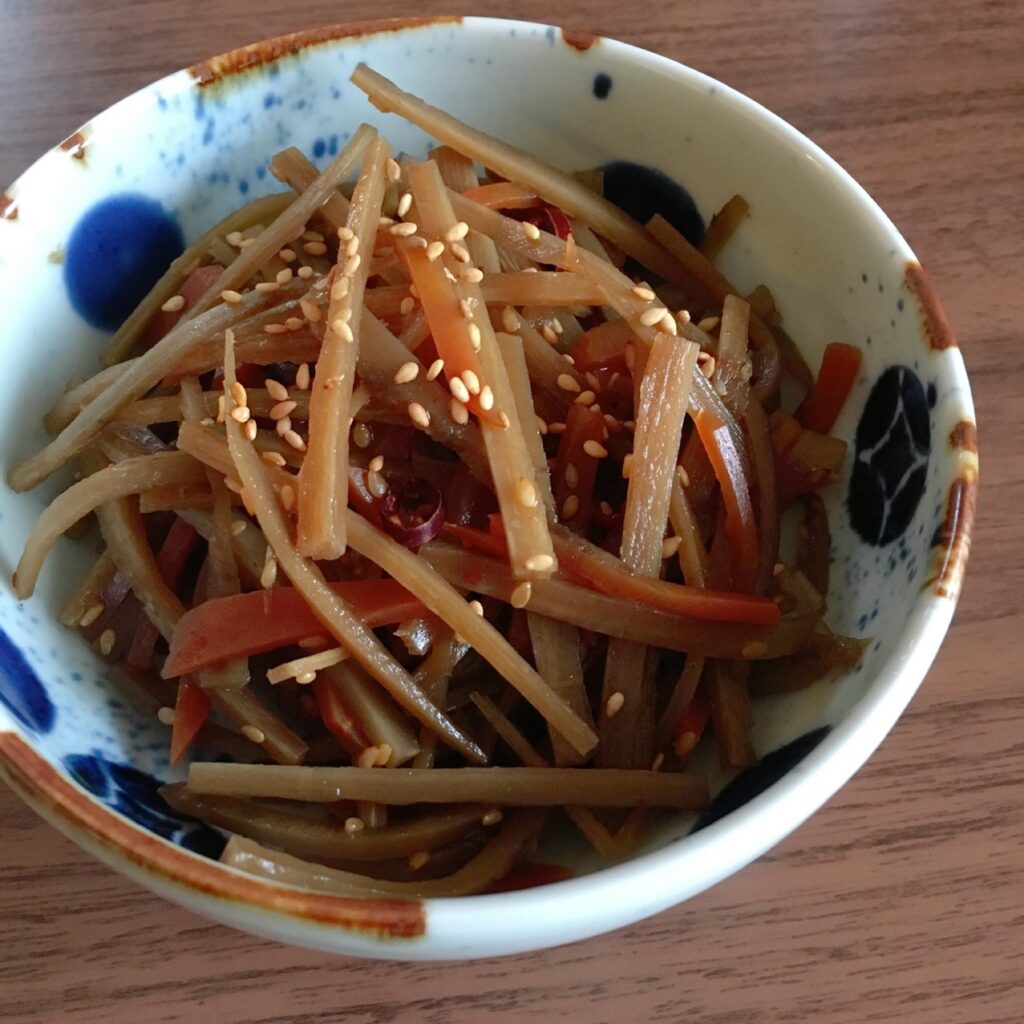
Kinpira gobo (きんぴらごぼう)
What kind of dish is Kinpira gobo??
Kinpira is a dish made of shredded or thinly sliced vegetables stir-fried and seasoned with sugar and soy sauce. It is preferable to give it a strong flavor to enhance its preservation.
Root vegetables such as burdock, lotus root, and carrots are common. Add other ingredients as you like, such as chili peppers, konnyaku, fish cakes, pork, etc.
The key to the deliciousness of my recipe is to use plenty of ground sesame seeds.
“Kinpira” is written as 金平 in kanji. In Japan, there is a folk tale called “Kintaro=金太郎.” Kintaro is nickname of sakatanokinpira’s(坂田金平).

There is an episode in which Kintaro won a sumo match with a bear when he was a child. It is said that the strong texture and chewiness of burdock and the spiciness of chili peppers were compared to Kintaro’s strength and bravery, and it came to be called “Kinpira Gobo.”
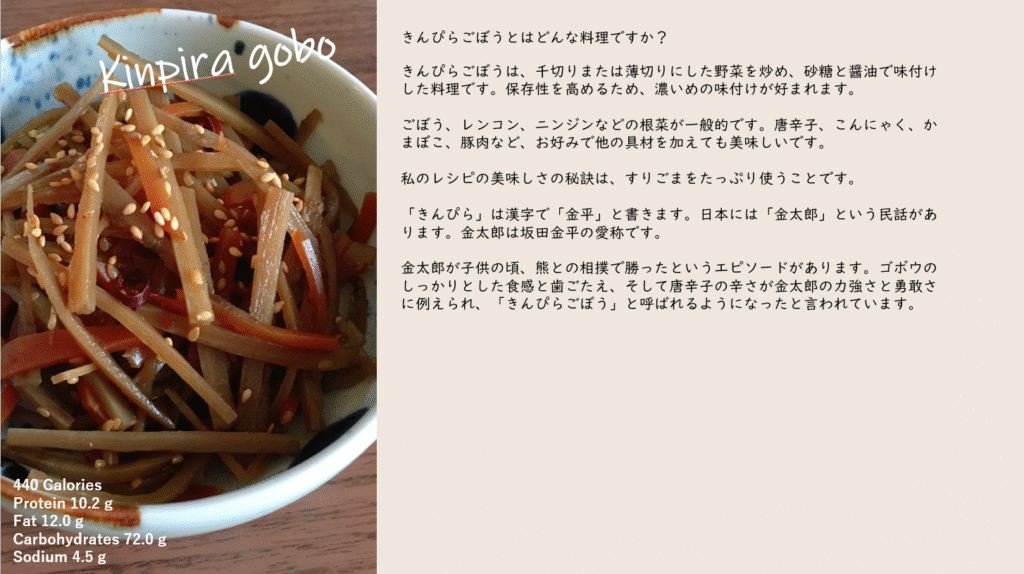
NUTRITION FACTS : Kinpira Gobo (Braised burdock in soy sauce)
TOTALNUTRITION VALUE

- 440 Calorie
- Protein 10.2 g
- Total Fat 12.0 g
- Total Carbohydrates 72.0 g
- Sodium 4.5 g
INGREDIENTS : Kinpira Gobo (Braised burdock in soy sauce) (6SERVINGS)
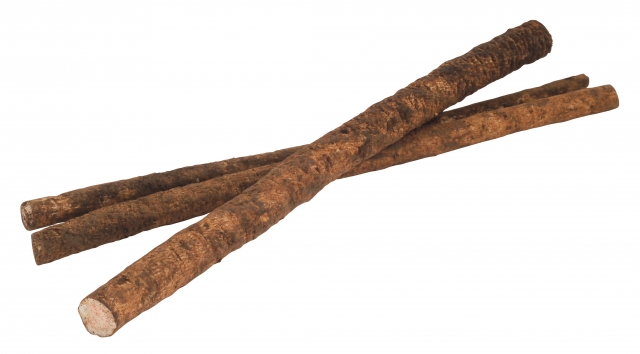
- Burdock 260g The amount is the weight of peeled skin☻*
- Carrots 60g
- Chili pepper 1g
- Sesame oil 5g
- Water 300g
- Dashi stock granules 2g
- Sake 40g
- Sugar 15g
- Soy sauce 25g
- Mirin 10g
- Ground sesame seeds 8g
- Roasted sesame seeds 4g

How to make Kinpira Gobo (Braised burdock in soy sauce)
- Wash the burdock with water to remove the mud.
- Lightly scrape the surface of the burdock with the back of a knife.
- Cut the burdock and carrot into thin strips.
- Soak the burdock in water for about 5 minutes.
- Stir-fry the burdock, carrots, and chilli pepper in sesame oil.
- Add the dashi granules and enough water to cover the ingredients, and heat over medium heat until the vegetables are soft.
- Add sake, sugar, and soy sauce and stir-fry until the water evaporates.
- Finally, add mirin and mix.
- Turn off the heat, add ground sesame seeds and roasted sesame seeds, and mix.
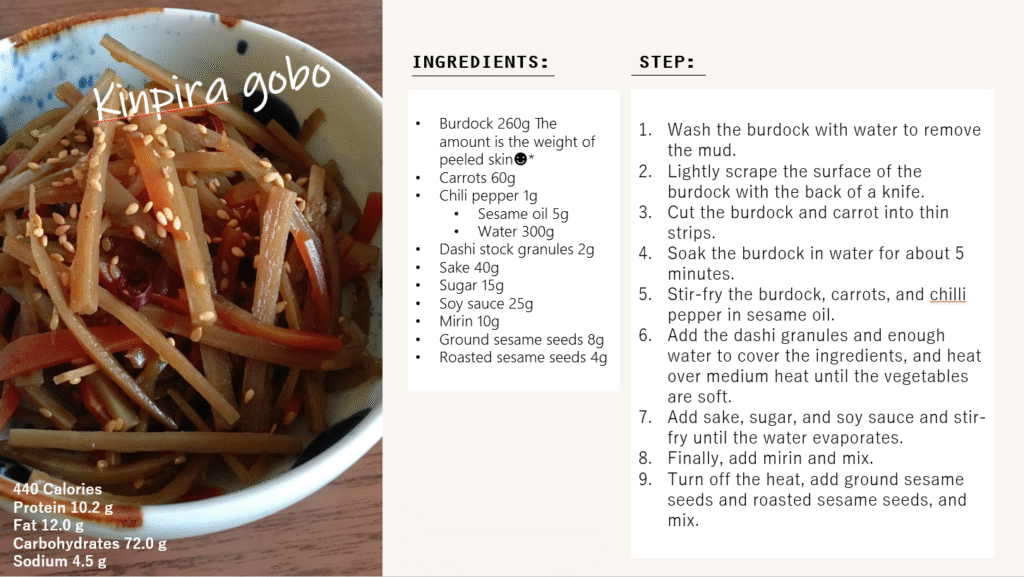
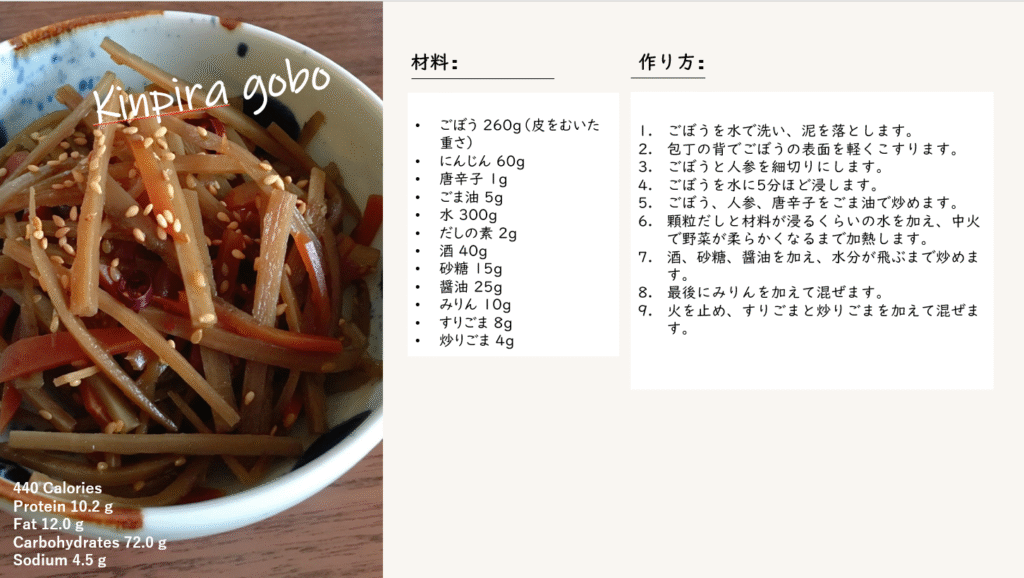
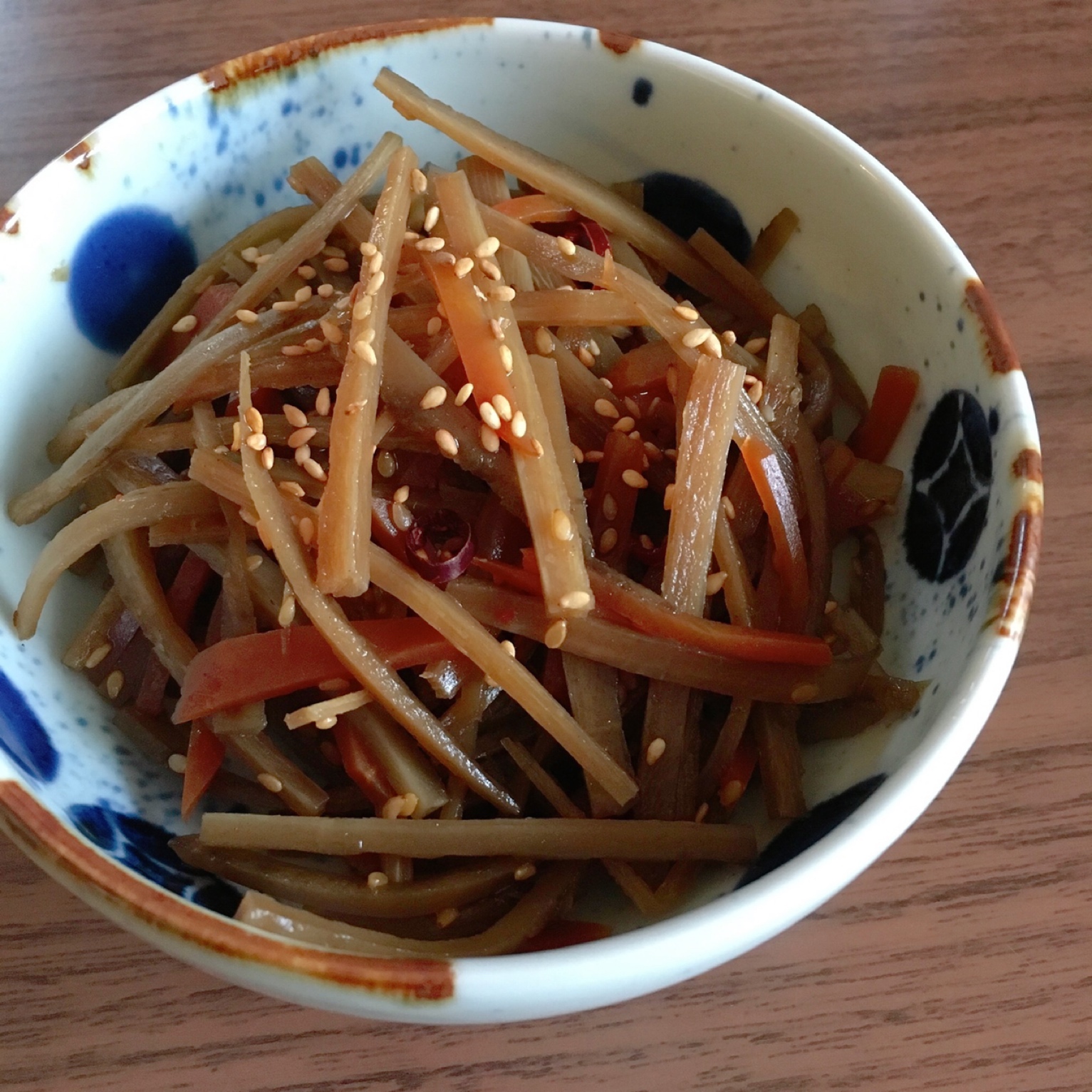


コメント